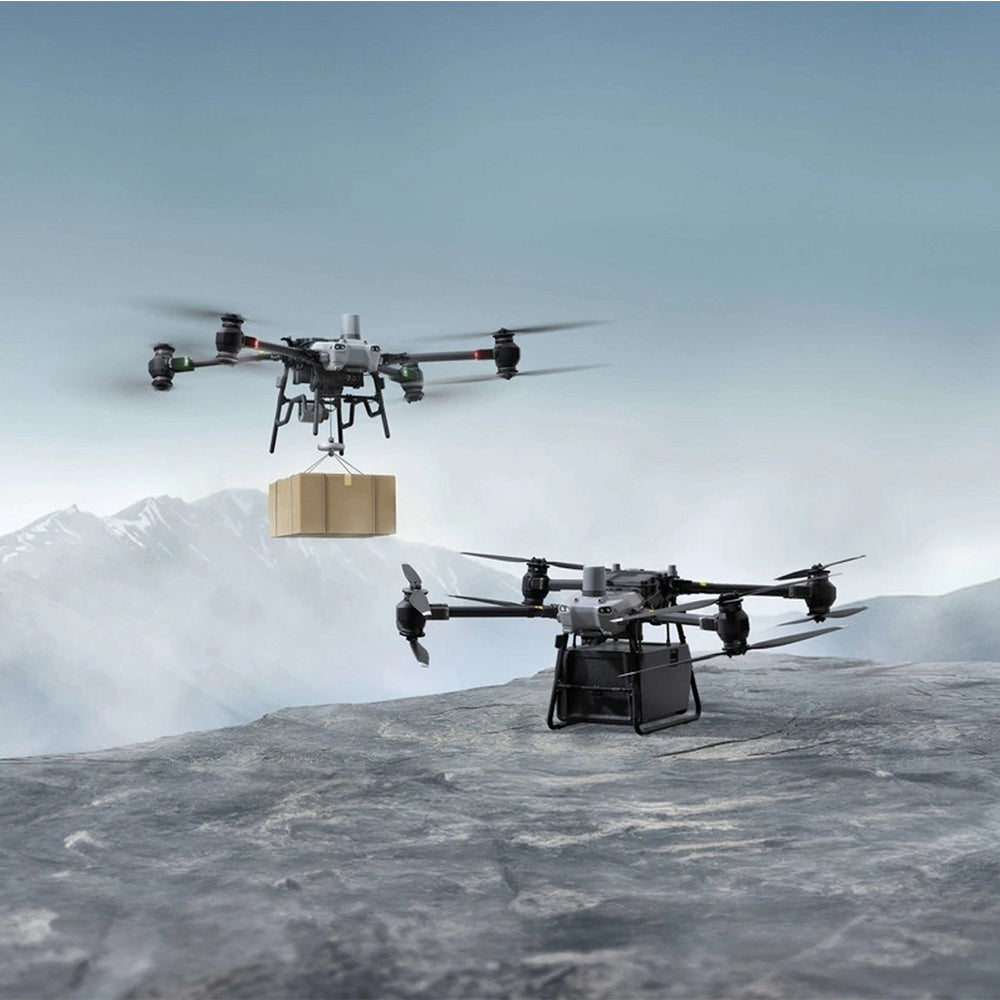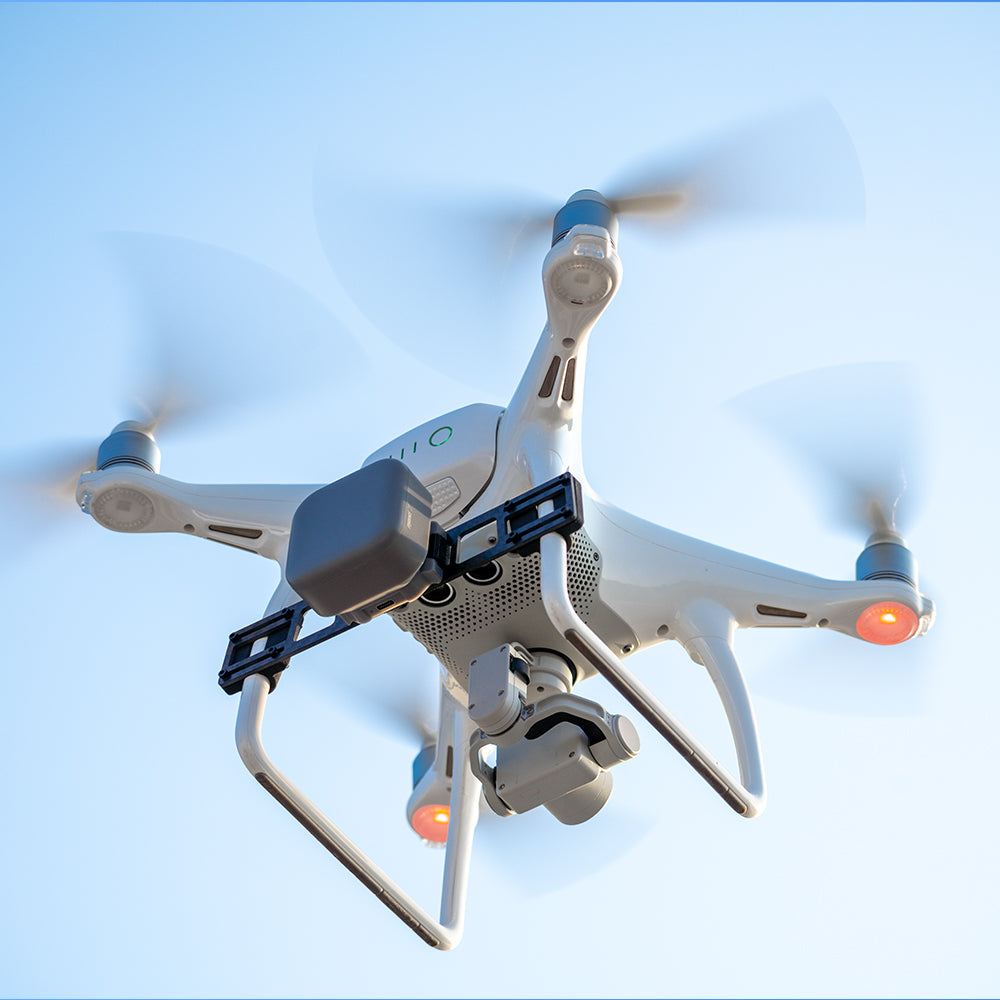The world finally has a DJI delivery drone. The Chinese drone making giant this week launched its first DJI delivery drone. It’s called the FlyCart 30, and that name makes perfect sense, as the drone is capable of carrying up to 30 kg (which is about 66 pounds) with two batteries on board, and up to 40 kg if you can get away with just one battery.
Besides being capable of carrying heavy weights, it offers a long range (16 km loaded or 28 km unloaded), and has intelligent features including obstacle avoidance. It’s versatile (able to support two load modes) ad is designed to be safe given redundancies such as dual batteries.
Dig deeper into those features, learn how this drone fits into the broader drone delivery market and more in this guide to the new DJI delivery drone, the FlyCart 30:

Key FlyCart 30 specs
Let’s start with a quick rundown of some critical specs on the FlyCart 30 delivery drone:
- Maximum load: 30 kg (dual batteries) or 40 kg (single battery)
- Range: 16 km (full load) to 28 km (empty)
- Maximum speed: 20 m/s
- Cruising speed: 15 m/s
- Maximum flight altitude: 6000 meters
- Maximum wind speed: 12 m/s
- Image transmission system: 20 km O3 with full HD FPV single-axis gimbal camera
- IP55 protection level
- anti-corrosion dual radar & dual vision
- intelligent obstacle avoidance
- dual battery
- built-in parachute
The drone itself is designed to be fairly portable given its foldable design.
 The parachute on the DJI FlyCart 30
The parachute on the DJI FlyCart 30
FlyCart 30 safety features
Particularly because delivery drones are likely flying over more populated areas (as opposed to say, vast farmland or otherwise desolate infrastructure like wind turbines and oil pipelines), additional safety features feel almost more critical with delivery drones versus any other.
DJI delivers on that with a few standout features designed with safety at the forefront.
The parachute: Most notable among them is a built-in parachute. And it’s not just any parachute. It’s equipped with safeguard functions on its own such as power-on self-check, independent power supply, oar stop protection before opening the parachute, and sound and light alarms.
Landing protection: During the take-off and landing process, multiple safety guarantee features kick in, such as sound and light prompts and a 6-second delay in propeller launch. With the addition of an RTK module to achieve centimeter-level high-precision positioning, take-off and landing is made even more accurate (and thus safe)
Backup points: You can program the drone to land in alternate points should it need to make an emergency landing at a location other than what was originally intended.
Obstacle avoidance: The drone is equipped with multi-directional intelligent obstacle avoidance technology so it can see objects in its path — and then automatically reroute around them. That’s made possible via a forward and backward rotating active phased array radar system plus two sets of binocular vision systems. There’s also a built-in ADS-B signal receiver, which can offer warings of other manned aircraft in the area.
Redundant batteries: Should one battery go bad during flight, the FlyCart 30 is powered by a dual battery system for redundancies. That second battery simply kicks in and allows the drone to remain safely flying.
DJI Pilot 2: The controller displays a program called DJI Pilot 2. The program’s primary function is to show the real-time flight status of drones and cargo delivery conditions, but it also has safety at its forefront. It displays the power of the drone in real time mid-flight, so you can confirm mileage accrued and time needed to get to the target point. In the event of extreme weather or other abnormalities, DJI Pilot 2 will issue warnings and can help navigate the drone to alternate landing points.

DJI Transport: the new one-stop delivery management program
Most users will use this drone in tandem with DJI Transport, which is what DJI is billing as a “one-stop airborne cloud platform” to plan equipment tasks, fully control operation dynamics, centrally manage team resources, and statistically analyze multi-dimensional data.
Delivery drone flights typically necessitate far more automation than a camera drone flight would, which is why this software is critical for task planning.
The program displays a 2.5D map of the drone’s area, with it displaying the drone’s operating status. Use that 2.5D map to draw complex flight routes and plan flight routes in advance, or mark locations and alternate landing point management.
With batch management of equipment health status and other maintenance information, managing a fleet of drones is made easier.
Yes, there’s still a camera
The FlyCart 30 is not a “camera drone” but it still has a camera so operators can get a view of what the drone is seeing.
Most delivery drone flights operate beyond the operator’s visual line of sight, which is why a strong image transmission system is critical. The DJI FlyCart 30 is equipped with DJI O3 image transmission, and the image transmission distance can reach up to 20 kilometers. And should that O3 image transmission signal struggle in the midst of potential interference, it can also work with the 4G network and can deal with signal blocking situations, should they arise.

The controller
The FlyCart 30 is designed to integrate with the DJI RC Plus, which is equipped with a 7-inch high-brightness large screen (up to 1200 nits) and supports dual-control mode. That means that pilots in two completely different places can switch the control authority of the drone with one button to meet various operational needs.
And it’s ultra durable. With IP54 degree of protection (which is a standard for defining durability), it’s officially considered waterproof and dustproof.
It’s also capable of operating in fairly extreme temperatures — as low as -4°F and as high as 122 °F. Thecontroller has a 6-hour long battery life.
On its own, the controller — which was originally built for the Matrice 30 Series, 300 RTK & 350 RTK — runs for $1,600.
How the DJI delivery drone works
The FlyCart 30 has two different loading modes. There’s a container system, and an empty crane system.
Most folks will load goods to be delivered in the general-sized EPP container, which is easy to open, close and disassemble — and comes with the drone.
But the empty crane system might be better for more complex operations. With it, the empty crane system relies on a cable to “drop items.” In the cable drop mode, the cargo will be released automatically after it touches the ground. The cable can extend to a maximum release length of 20 meters.
Either way, it has a maximum capacity of over 70 liters and can carry up to 30 kg payloads with a dual battery, or 40 kg maximum payload if you’re willing to fly with just one battery.
The drone is also pretty smart too. Internal computing power supports weight and center of gravity detection to ensure correct cargo loading and safe and stable flight. And if you’re flying in the empty crane mode, the drone can intelligently adjust its attitude, effectively eliminating any swing of the cargo.









